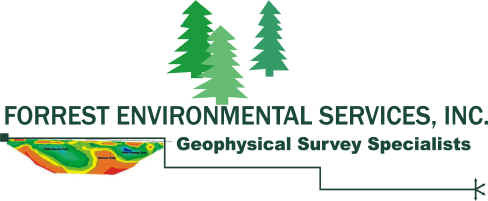
|
|
|
ELECTRICAL RESISTANCE TOMOGRAPHY
|
Seismic Refraction Seismic refraction measures density, thickness, and depth of geological strata using sound (acoustic) waves transmitted into the subsurface. Sound waves travel at different velocities in various soils and rocks and are refracted at the interface between layers. The time is measured from the time source to geophones. The seismic source for shallow investigations range from a hammer striking a metal plate to plastic explosives. Geophones receive the vibration of the sound energy and translate it to an electrical signal. The signal is displayed on a seismograph. Time versus distance plots of the first-arrival are used to locate depth of strata and possible fractures. The seismic refraction method is based on three important assumptions:
If these assumptions are not reasonably satisfied at a specific site, this technique may provide little usable data or interpretation may become quite involved and expensive. Seismic refraction has been used extensively in shallow geotechnical, groundwater, and hazardous waste investigations. The method is widely used and is a valuable tool for defining the hydrogeologic setting (e.g., depicting the thickness and number of different geologic strata, depth to the water table and bedrock, and anomalous subsurface geologic features). Seismic Profiling Seismic profiling uses high resolution seismic reflection to locate offshore objects located below surface water. The seismic profiling instruments needs a minimum of three feet of water above the sediment. Seismic profiling measures density, thickness, and depth of geological strata using sound (acoustic) waves transmitted into the subsurface similar to seismic refraction but uses hydrophones instead of geophones. Seismic profiling can determine offshore hazards, locate pipelines, small objects, voids, and bridge piling scours, and aid in mining and dredging volume calculations.
|